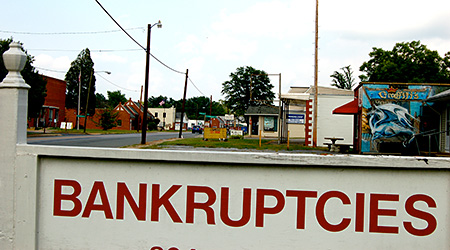Building Credit After Bankruptcy

Correcting errors on your credit report after a bankruptcy is a key to overcoming credit problems. Sometimes, credit reports will continue to show delinquent accounts as "open and overdue" -- even when these accounts were closed and the obligations to the creditor were settled as part of your bankruptcy proceedings. If this has happened to you, the solution is simple. Contact the credit bureaus and request that those accounts be properly reported as "included in bankruptcy." This is the correct legal terminology, and the credit bureaus will be forced to follow your request. Remember -- this is the only way your credit can recover if your credit report is showing errors.
There are two types of credit that will quickly rebuild your credit score after a bankruptcy: "installment credit" and "revolving credit". Installment credit is anything like an auto loan, student loan, or home mortgage. Revolving credit means things like credit cards or home equity lines of credit. Most recently bankrupt people have trouble qualifying for a standard, unsecured credit card. The best and easiest solution to this problem is using a secured credit card after bankruptcy, which gives you a credit limit that's equal to an amount you deposit at the issuing bank, not to mention that it establishes a savings account in your name which will draw interest as you use the card. The benefit here is two fold -- when you make regular payments on your secured credit card, your credit score improves. Also, your savings account will draw interest, and that account will still exist when you've paid off the card and closed the account.
Typically, a secured credit card minimum investment is $200 to $500. This may seem like a drop in the bucket when compared with the credit limits you had before your bankruptcy. However, a big mistake people make that leads them to bankruptcy is simply using up their full line of available credit. Believe it or not, maxing out your credit line hurts your credit score in the long run. A good rule of thumb -- don't charge more than 30% of your credit limit, 20% or less is even better if you can afford to do so. Making sure to pay the balance off in full each month is a great way to build credit after a bankruptcy. The proper way to use your new secured credit card post-bankruptcy is "light and regular". Instead of maxing out your card every month and only paying the minimums, spend only what you can afford to pay off each month. This gentle use of available credit is what will help build your credit. Get in the good habit of not charging more than you can pay off every month -- not only will your credit score improve, but your general finances will be better for it.
When looking for a secured credit card after bankruptcy, there are a few things to keep in mind. Don't run out and grab the first secured card you find. Look for a secured card with no application fee and a reasonable annual fee, somewhere around $30-$60 per year. This will imply that the secured card you're using is backed by a company that actually wants to help you improve your credit. Some secured cards take huge upfront chunks of money from your account, and kill you with high annual charges. Remember -- you don't need to pay high fees like this to build your credit. Look for a secured card that advertises that they report to the major credit bureaus. You won't be doing your credit score any good unless your payment history is being reported to the three major bureaus: Equifax, Experian and TransUnion. Before you apply for a secured card, call customer service and ask if the issuer regularly reports to all three. Another sign of a solid secured card investment is a card that has the option of converting to an unsecured card after a year or so of on time payments. You want your good credit habits to get you upgraded to a regular credit card within a year or two.







